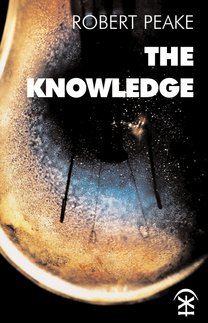Don’t Try This At Home by Angela Readman
– Reviewed by Bethany W Pope –
Angela Readman’s Don’t Try This At Home is a darkly surreal collection of short stories with a sharp psychological edge. Most of them explore the dangers of self-revelation and the struggle of attaining an identity. The writing is uniformly strong and the plots are satisfyingly complex, though the narrative voice doesn’t seem to alter much from story to story. They all seem to be spoken by a single person, albeit one who has lived many diverse lives. Aside from this, the collection is an absolute pleasure to read; especially if you are the kind who enjoys giving your mind a hard, dark twist.

The strongest story in the collection also supplied the title. In ‘Don’t Try This at Home’ a nameless narrator experiments with desire, commitment, and consciousness. The narrator is involved with a man who doesn’t know what he wants. He comes from a long line of fragmentary men, and (with the help of a magical, symbolic shovel) the narrator helps him multiply his experience while dividing his heart:
I cut my boyfriend in half; it was what we both wanted. I
said we could double our time together. He said he could
be twice as productive. I don’t think it would have worked
with just anyone at any time. It had to be now.
Daniel got a spade off his mother that had belonged
to his father, and to his father – both men who were never
really all there.
It is interesting to me how few of Readman’s first-person narrators have names. I think that it reflects a strong theme in her work; the speakers tend to have a very strong desire to reveal a story, and at the same time they seem to have a collective urge to withhold themselves (at least in part) from the readers. It almost seems like a survival mechanism, and this device might tie into the magical-realist elements of the stories themselves. Sometimes it is easier to see the truth if it is wearing a mask. In this story, the twin truths seem to be that some people cannot ever love fully, and other people are ok with that because they are afraid of ever being fully loved. So, since both characters get what they secretly really want, I guess you could read this story as having a happy ending. Daniel gets to live a multitude of histories and the narrator (the unnamed ‘I’) gets to avoid ever being really intimate, or ever being the centre of anyone’s attention:
My husband worked in engineering, and he worked as
a draughtsman at his firm. He drove a taxi, and he drove
lorries of toilet rolls to Wales. He worked in a place that
sold scuba gear, and he did the odd night on the door in
swanky bars in town. He lived at the gym, and only lifted
the remote. Some colleagues called him Daniel, some Dan,
Danny, Danny Boy, one of the guys at the gym called him
The D-man for no reason I could understand. I never knew
how much of him would be home any night because of
his hours. It was hard to keep track. The important thing
was we got by, and he was with me, mostly.
The narrator (who, remember, doesn’t consider herself important enough for an introduction) is a secondary or tertiary concern for her diversifying spouse.
In ‘Dog Years’ Readman inhabits the consciousness of a girl who was born with hypertrichosis; werewolf syndrome. The nameless narrator was abandoned by her mother and taken in by nuns who eventually signed her over to a circus. In her time as a performer, the dog-girl falls in love with a fellow performer (lobster-boy) and, in a typical Readman strategy, she attempts to alter her essential self in order to become beautiful for him. Unlike the real-life romance of Emmet the alligator-skinned man and Percilla the Monkey-Girl (who notoriously loved each other as they were), this attempt to woo by symbolic self-obliteration does not end well:
I ask the mirror if I’m pretty. My fur is impressive, people
say. I’m not sure it’s the same. The razor winks at the sun.
I shave, dab my face and tie ribbons in my hair. Furless,
I’m silver, a ghost. I don’t look like me. I walk to Archie’s
with candy, ready for him to drop his tobacco, beg a kiss.
‘Dog girl?’ he says. Then he yells, ‘Check this out!
She won’t be able to work for a month! Roll up, roll up.
See the world’s dumbest girl!’
‘Conceptual’ is the biography of a lost idea: that a family can exist as itself, as its own ideal version, unchanged by the world. In it, a family of conceptual artists (headed by a strong woman who is eventually destroyed) is slowly ground down by the pressures of conformity. The father leaves first, enticed out of his kingly robes by the owner of a stationary shop. He trades ermine for Dockers and passion for paper. The mother tries to express her dismay through visual imagery, but that spectacularly fails:
Then, she reprinted the photo, cut it into
sections and sent pieces of it to everyone she knew. The
paper-shop woman received her own mouth in the post.
The police came to our house. The word ‘harassment’
punched Mum in the chest. She tried to explain how
she just wanted to give people something to carry with
them all day, show them parts of themselves they didn’t
understand. The police looked around the house and
saw the canvas of Dad’s mistress covered in chocolate
and crumbs. Child Protection came and typed reports
about the dirty sheets and the peas all over the floor.
They promised to return.
In Readman’s world (and it is a world, unified by voice and outlook) conformity is a desirable danger, a siren, that lures every would-be voyager to their doom. In these stories, the phrase ‘what would the neighbours think’ has a terrifying weight. The characters are attracted and repulsed, in equal measure, by the opinions of the blander, ordinary world, and the struggles that result from this are frightening (and fascinating) to watch.





